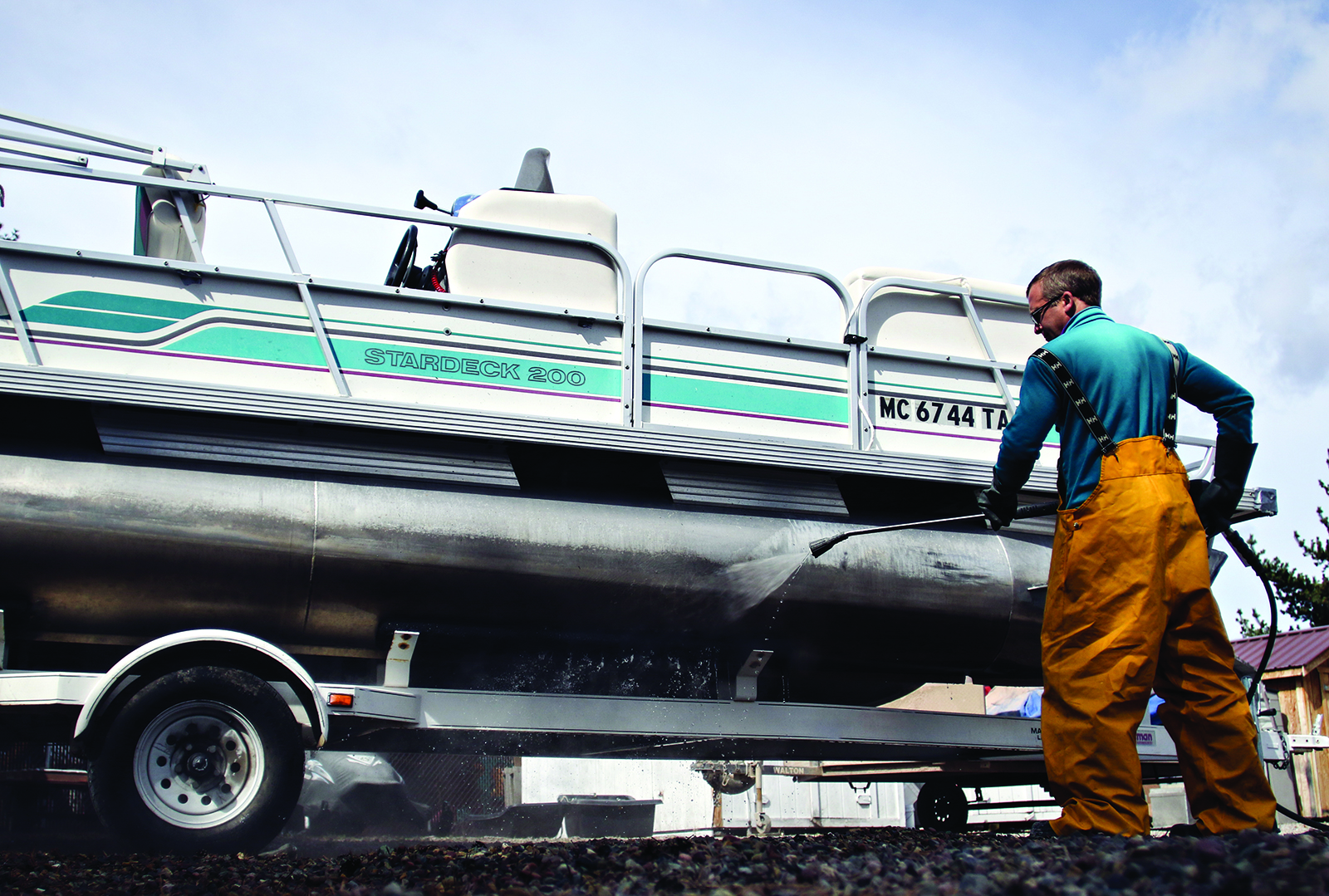FWP Reminds Recreationists to Clean, Drain and Dry Watercrafts
Boats and gear can carry Aquatic Invasive Species to new waterways
By Maggie Dresser
As boating season launches across the state, Montana Fish, Wildlife and Parks (FWP) is partnering with other agencies to operate more than 25 road-side watercraft inspection stations to prevent Aquatic Invasive Species (AIS) from hitchhiking to different waterways.
Boaters and anglers must remember to clean, drain and dry their watercrafts and gear before leaving a water access site.
“We couldn’t be as effective in detecting mussel-fouled boats and protecting Montana waters without the help of our partner agencies, particularly conservation districts and tribal governments who help us with many inspection stations across the state,” says FWP Fisheries Division Administrator Eileen Ryce. “So far, FWP and our partners have inspected more than 9,800 watercraft, 17 of which were mussel-fouled.”
If a mussel-fouled boat is intercepted, inspectors clean it, lock it to the trailer to prohibit launching and contact the destination state to arrange for a follow-up if needed. If necessary, a full decontamination is conducted when it reaches its destination.
Failure to stop at a watercraft inspection station could result in a fine up to $500. Non-residents transporting a watercraft into Montana must purchase a vessel AIS prevention pass before launching and inspection is required for Montana residents before launching if the boat is entering the state, crossing west over the Continental Divide or entering the Flathead Basin.
Anglers must drain water and clean off plants, animals and mud from gear and equipment, dry everything off for at least five days before moving to a different water way, dispose of unwanted bait and fish parts and use non-felt soled boots.
Inspection station locations in Northwest Montana include Whitefish Lake, Apgar-Lake McDonald, Polebridge, Eureka, Troy, Polson, Thompson Falls, Ravalli, Clearwater Junction and St. Regis.
AIS are plants, animals or pathogens that are not native to Montana and can cause environmental harm. Populations can reproduce quickly and spread rapidly because there are no natural predators or competitors. Invasive species can displace native species, clog waterways, impact irrigation and power systems, degrade ecosystems, threaten recreational fishing opportunities and can cause wildlife and public health issues.
For more information, visit https://fwp.mt.gov/conservation/aquatic-invasive-species or www.cleandraindrymt.com.